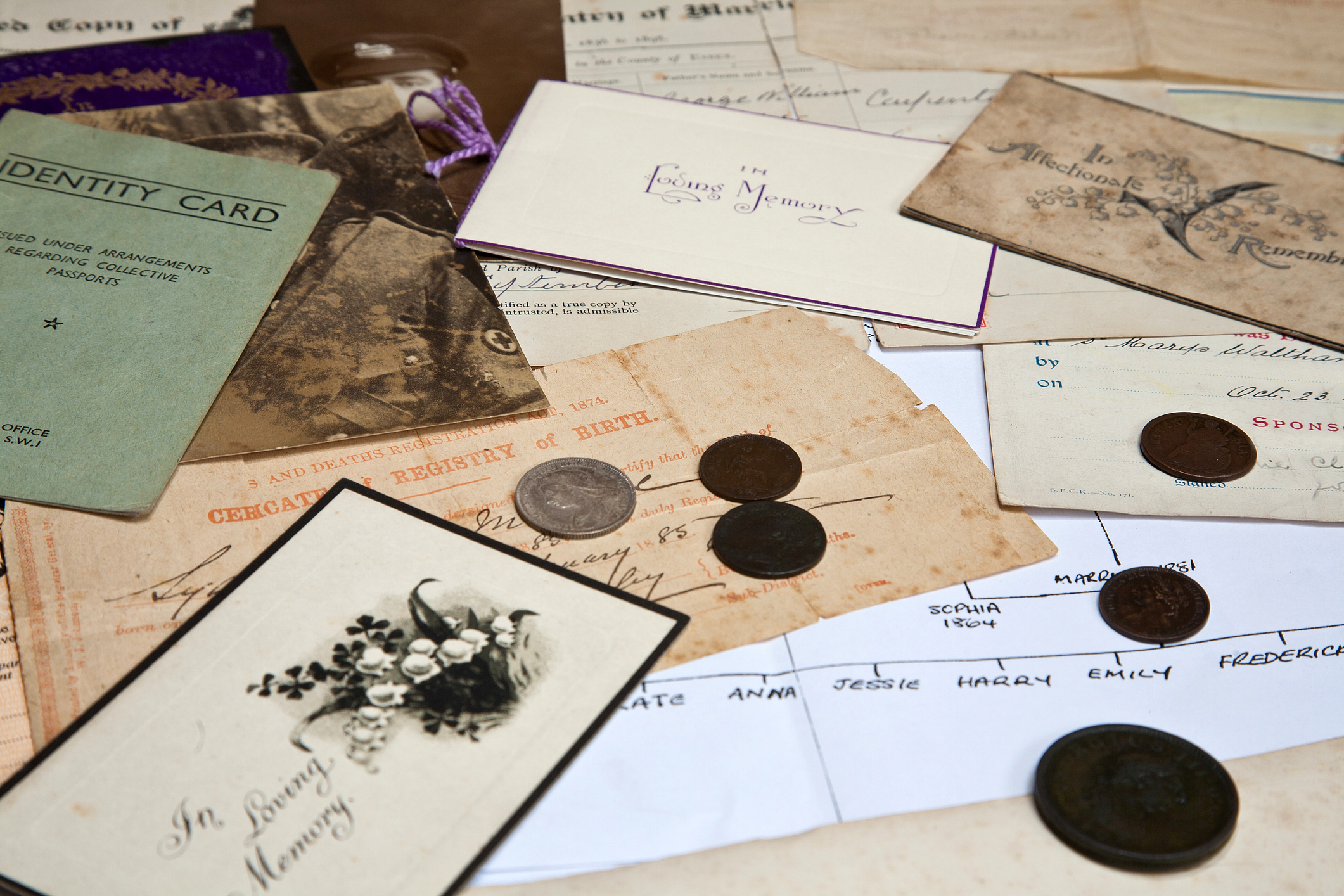
New to genealogy research? Welcome to the wonderful world of family history! In this article we’re going back to the basics to help those of you with no experience or knowledge in genealogy get off to a great start.
What is genealogy research?
Genealogy is the study of one’s family history — that is, the history of one’s lineage or family tree. Researching your genealogy means building a family tree and gathering information about your family members from the recent and distant past.
People research their genealogy to learn more about who they are and where they come from. Whether you already know many details about your family’s origins or you’re starting from scratch, working on your genealogy can help you gain insights about your roots and what makes you you.
Getting started
The very first step in genealogy research is to gather what you already know — and you probably know more than you think.
You can start by building a basic family tree and entering all the information you have, starting with yourself and branching outwards and upwards. Click here to learn how to get started building your tree on MyHeritage.
Next, take a look around your home: what photos and documents do you already have in your possession that might help you gather information for your tree? Perhaps you have some old photo albums, letters, postcards, or other memorabilia from your family.

Now is the time to look over what you have, digitize what you can, and gather any additional information you can from these items. Click here to learn how to scan old photos and documents to add to your tree on MyHeritage.
Setting goals
Once you have a basic family tree to work with, take a look at what you have and think about what you would like to know next.
Perhaps you find that you’re missing quite a bit of information from your mother’s side of the family, and you’d like to fill that out. Or maybe you’ve come across some reference to a mysterious uncle who no one talks about anymore and you want to find out what happened to him.
It doesn’t have to be set in stone — your goals will evolve and shift over time. Plus, you’ll no doubt encounter some surprises along the way, some of which may take you on a fascinating sidetrack. But it does help to have an idea of where you want to be, so you know where to focus your research efforts.
Click here for a detailed webinar with James Tanner on developing a research plan.
Interviewing family members
The next step is to reach out to your family members and ask for any information they have. It’s wise to begin with the oldest family members, because they are the guardians of the oldest living memories in your family, and you never know how much longer they’ll be around or otherwise able to remember and share their memories with you.

Be sure to record these conversations, or at least take very careful notes, so you can refer back to them when entering information into your family tree and in the future.
You can also take the opportunity to ask your relatives for any photos or documents they might be able to share, which you can scan and add to your tree.
Click here for a dedicated article on interviewing your relatives for genealogy.
Diving into historical records
Historical records can help pick up where your family’s living memory leaves off.
By researching your family in historical records, you can verify the information you’ve been told and learn new details about your ancestors. There are many types of historical records that might be helpful: vital records (birth, death, and marriage) can provide basic information on the dates and places of these important events as well as details on additional family members. Censuses can tell you where your family was living at a given time and who they were living with. School records can provide information on education, military records can tell you whether and where your ancestors served in the army, and so on and so forth.
MyHeritage is home to billions of historical records from all over the world that are easy to search using MyHeritage’s advanced search engine. Click here to search for your ancestors in MyHeritage’s historical record database.
Citations, citations, citations
The biggest and most regrettable rookie mistake is forgetting to cite your sources. Citing sources makes it possible to trace the information back to where it came from. You’d be surprised how often, upon review, you’ll notice things that you missed the first time around. Giving precise source citations also ensures that when the time comes, whoever inherits your research from you will be able to retrace your steps.
Take a course
One of the wonderful things about genealogy research is that you get to decide how much time and effort you want to invest in it. But for serious researchers, there can be quite a learning curve, and you may not know where to begin.
That’s why we launched the Introduction to Genealogy course, a free, full-length online course you can start right now from the comfort of your home.
The course is hosted by MyHeritage’s Genealogy Expert, Daniel Horowitz, and features a world-class panel of experts providing a strong foundation in family history research.
Click here to check out the Introduction to Genealogy course.





